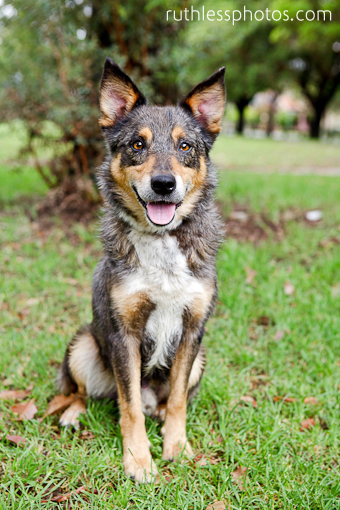McGreevy on Punishing Dogs
This post is part of the McGreevy seminar series. Click here for the index.
Again, this article refers to operant conditioning principles. I suggest anyone without prior knowledge of operant conditioning to refer to Crystal at Reactive Champion’s post on operant conditioning.
Punishment is anything that reduces the frequency of behaviour. Positive punishment is when something bad is added (e.g. rattling a can of stones if a dog barks), and negative punishment is when something good is removed (e.g. when your puppy mouths you and you exit the room).
These are both called punishments as they reduce the frequency of behaviour. Negative reinforcement is related, as this involves removing something bad to act as a reward (e.g. a dog who doesn’t like being confined could be rewarded for calm quite behaviour in that confine by being released from that confine).
However, punishment in dog training is often only referring to an aversive introduced to suppress behaviour.
McGreevy did not advocate the use of punishment when training dogs. He felt that punishment (or causing dogs to feel threatened, pained, uncomfortable, disappointed, or fearful) was simply ‘not good’ for dogs. Furthermore, punishments can sometimes have long-term consequences, as dogs are often sensitive. (He summarised it as, “It’s hard to unteach fear.”) Dogs can also associate some of their emotions from punishments with people, which can be undesirable.
Punishment, however, is unavoidable. McGreevy explained that putting a dog on a collar almost always is negative punishment (taking the dog away from good things), but trainers can still seek to use as little punishment as possible. Punishment does not have to be abusive, it is just feedback to help a dog understand that some behaviour is unproductive. Mild punishment (like a no reward marker) can be effective in reducing behaviours, but it is also risky as it can lower motivation.
Punishment should be used as little as possible, or else the dog may develop learned helplessness. He described punishment as being ‘a step towards habituation’. Punishment, when used, often leads to the need for more punishment. Additionally, use of positive punishment for anxiety-related behaviours could escalate the animal’s distress.
McGreevy rejected the use of check chains, calling them frustrating, painful, and dangerous. He congratulated the dog community for largely rejecting their use.
Overall, McGreevy did not have anything revolutionary to saying about punishments, but I hope this still provides some interesting thoughts regarding dog training.
Further reading: Ian Dunbar on Punishment
This post is part of the McGreevy seminar series. Click here for the index.






